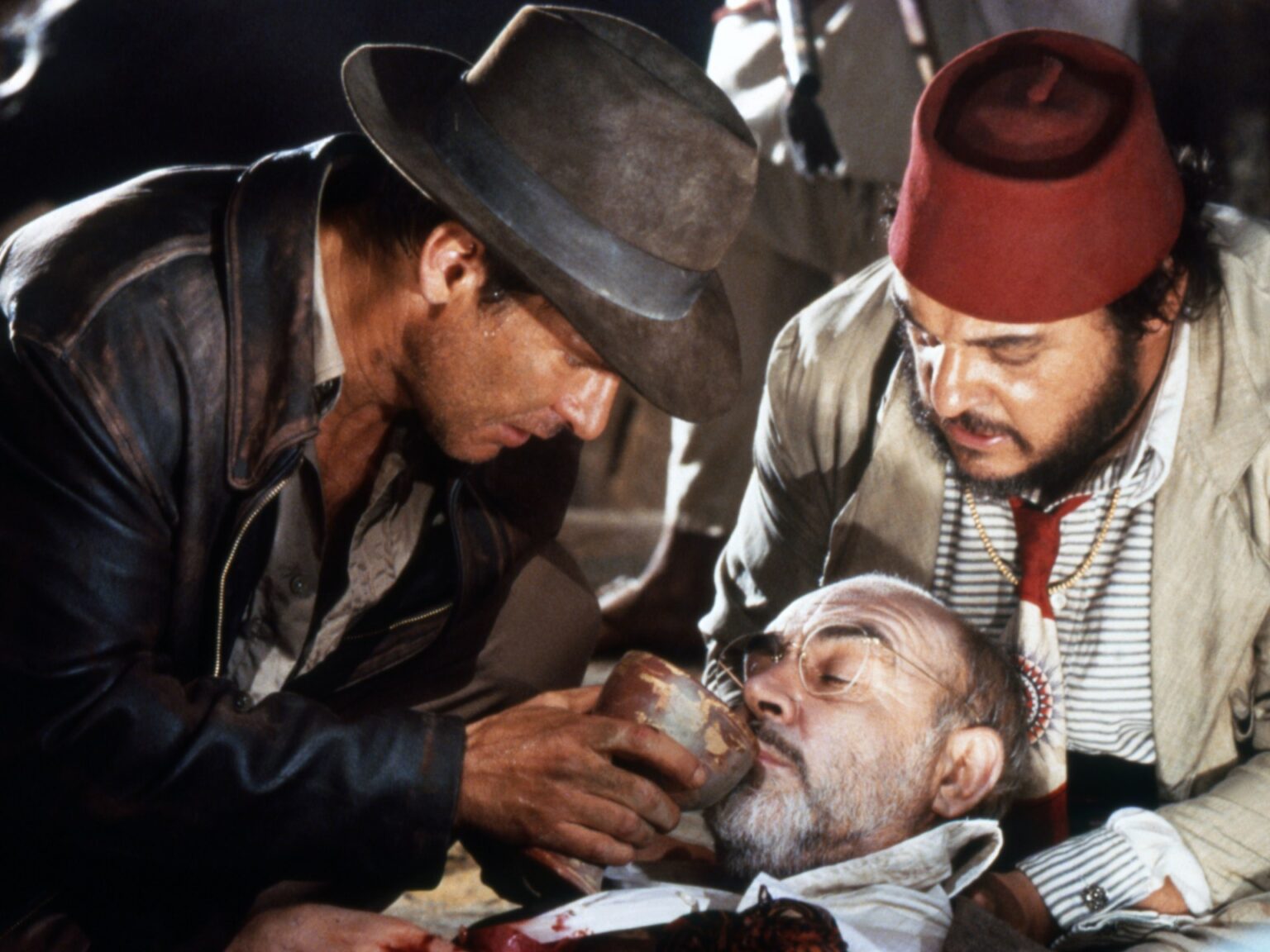Archaeologists have discovered a tomb beneath the ancient, imposing Al Khazneh in Petra, Jordan.
Long before it appeared in Stephen Spielberg’s 1989 blockbuster Indiana Jones and the Last Crusade, Al Khazneh (The Treasury) was hand-carved into the pink sandstone cliffs of the first-century BCE city of Petra.
The 40-metre (131-foot) high Al Khazneh and the city it sits in became a UNESCO World Heritage site in 1985 and was added to the list of the New Seven Wonders of the World in 2007.
OK, what did they find?
In August, a team of Jordanian and US archaeologists unearthed a hidden tomb with 12 complete skeletons and a trove of bronze, ceramic, and iron artefacts.
According to the researchers, one of the skeletons was clutching a ceramic cup, similar to the Holy Grail chalice in the Spielberg film.

What, you don’t mean?!
One of the leaders of the dig, Pearce Paul Creasman, was eager to qualify reports of a chalice having been discovered, telling Al Jazeera: “Not a chalice. A juglet.
“But it had an uncanny resemblance to the movie prop from the Indiana Jones film as it was being excavated! In the light of day, it is a normal ceramic vessel, the kind of which we could expect to find in Petra.”
Boo! How was the tomb discovered?
Unlike the elaborate facade of the exterior, the interior of Al Khazneh is a simple main chamber and three antechambers.
In 2003, two tombs with partial skeletons were unearthed to the left of the main chamber, leading researchers to speculate that additional tombs might exist in the area.
After receiving permission from the Jordanian government to explore the site, researchers used advanced remote-sensing tools to locate the newly discovered tomb.
Who were the 12 skeletons?
No one really knows.
According to Tim Kinnaird from the University of St Andrews School of Earth and Environmental Sciences, who examined the find, “The tomb was most likely built as a mausoleum and crypt in the Nabatean Kingdom at the beginning of the first century AD for Aretas IV Philopatris [Nabatean king from roughly 9 BCE to 40CE].
“Like many tombs in the valley, few remains have ever been found in the tombs due to their subsequent use and reuse over the last two millennia.
“It’s fantastic that we now have the pottery, ecofacts and sediments to date when the Treasury was constructed… to have a definitive date will be a monumental achievement for us all.”
What’s the Nabataean kingdom?
No one really knows a great deal about the Nabateans. However, they’re thought to have made significant advances in engineering, especially in water management and, as evidenced by Petra, architecture,
Before it was invaded by the Roman Empire around 106 CE, the Nabatean kingdom was a major Arab kingdom from at least 312 BC, on swaths of what is now Jordan and Israel.
Its then capital, Petra, oversaw many of the region’s key trade routes, connecting the Arabian Peninsula, Egypt, and the Mediterranean.
So, was Al Khazneh the Nabataean treasury?
It could have been, but there’s no real evidence for it. Many contemporary researchers think the building may have been a mausoleum.
The name, Al Khazneh or Khaznet al-Faroun, came from the belief among local tribespeople that the urn visible at the top of the facade contained untold Egyptian treasure.
According to the legend, the Egyptian pharaoh, on escaping Moses’ closing of the Red Sea with part of his army, magically created Al Khazneh as a safe place for his treasure.
The urn is actually carved from solid sandstone but that did not stop local men from riddling the sculpture with gunshots in the hope of releasing the treasure inside.
Is there more to Petra than just Al Khazneh?
The vast majority of the city remains underground, archaeologists like Zeidoun Al-Muheisen of Jordan’s Yarmouk University, who has been excavating Petra since 1979, estimate.
Above ground, there are a number of temples and tombs that reveal themselves to people entering the city via the natural and winding narrow rocky opening known as the Siq.
So there’s more beneath Petra’s sands?
“Yes, there is more to discover,” Creasman told Al Jazeera.
“We have not completed excavations at the tomb itself… there is far more work remaining.
“Many of the secrets of the Nabataeans remain in Petra’s sands.”
https://www.aljazeera.com/news/2024/10/16/whats-so-spectacular-about-the-new-tomb-discovery-in-jordans-petra?traffic_source=rss


